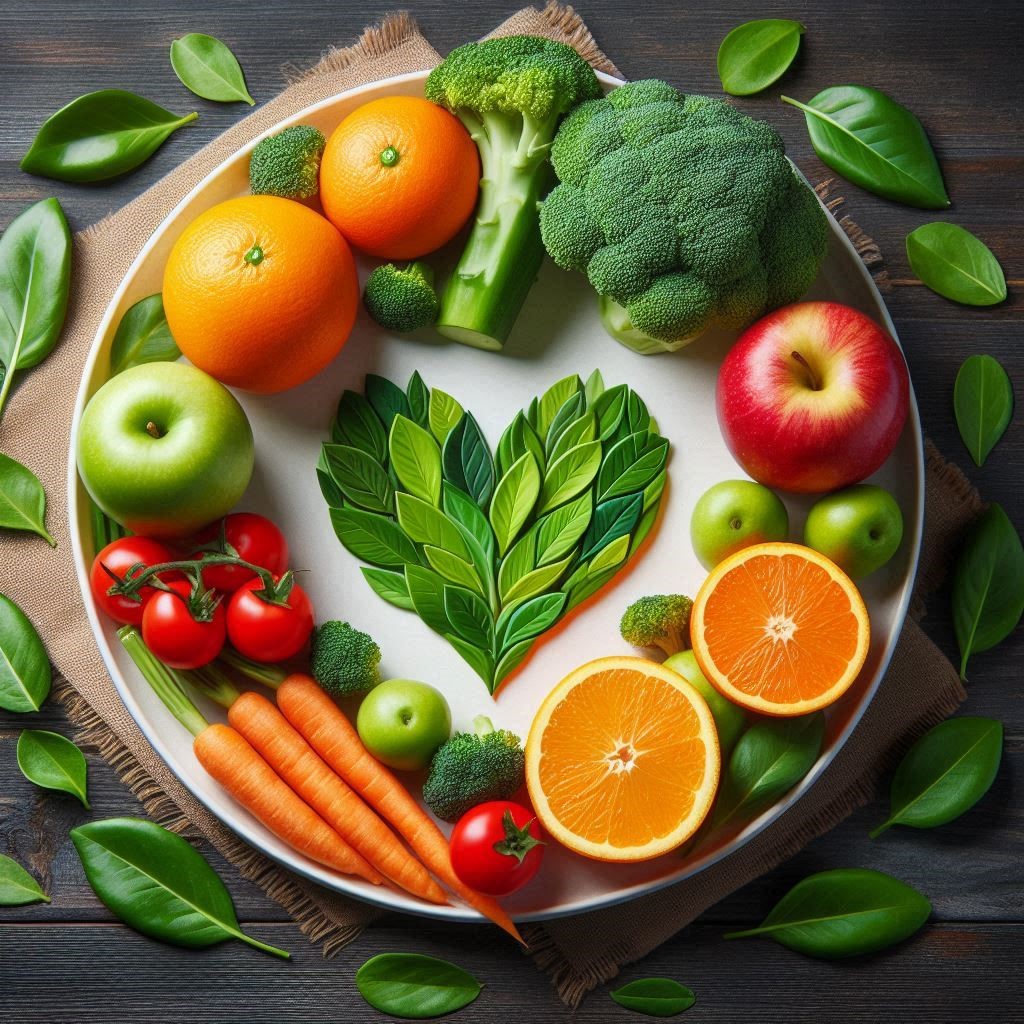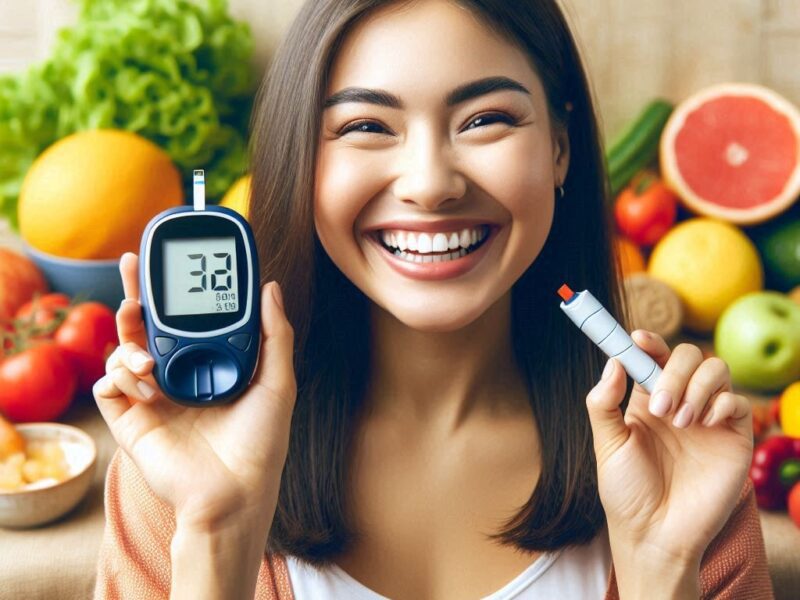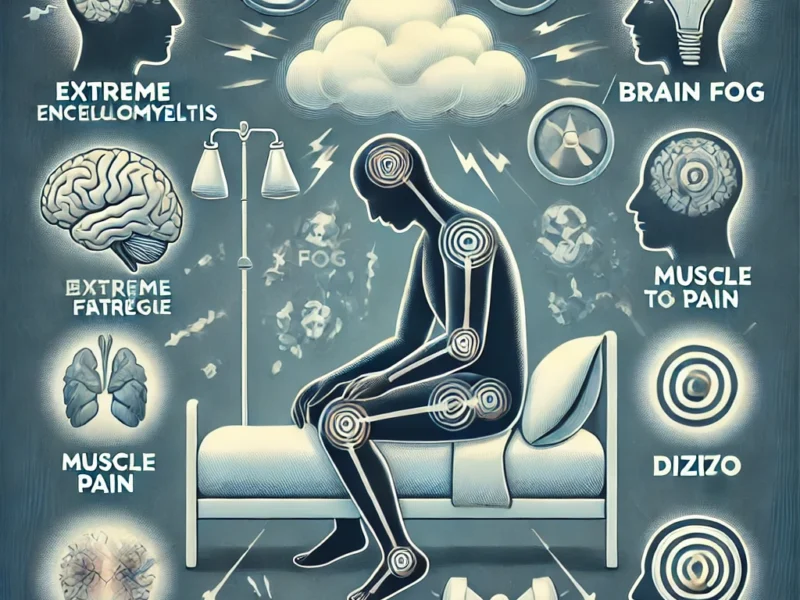
How to Lower Cholesterol Naturally
Cholesterol is a waxy, fat-like substance found in every cell of the body. It is essential for the production of hormones, vitamin D, and substances that help digest foods. While cholesterol is vital for these functions, having too much of it in the blood can pose serious health risks. Cholesterol travels through the bloodstream in two types of lipoproteins: low-density lipoprotein (LDL) and high-density lipoprotein (HDL).
- Low-density lipoprotein (LDL): Often referred to as “bad” cholesterol, high levels of LDL can lead to the buildup of plaque in the arteries, increasing the risk of heart disease and stroke.
- High-density lipoprotein (HDL): Known as “good” cholesterol, HDL helps remove LDL from the arteries, transporting it back to the liver, where it can be broken down and eliminated from the body.
Maintaining healthy cholesterol levels is crucial for cardiovascular health. Elevated cholesterol levels, particularly high LDL and low HDL levels, can lead to the development of atherosclerosis, a condition characterized by the hardening and narrowing of the arteries. This can result in serious complications such as heart attacks and strokes.
Understanding how to naturally manage and lower cholesterol levels is essential for reducing these risks and promoting overall heart health. In the following sections, we will explore various natural strategies to help lower cholesterol levels and maintain a healthy balance.

Understanding Cholesterol Levels by Age
Cholesterol levels can vary significantly based on age, gender, and other factors. As people age, their risk of high cholesterol and related health issues can increase. Understanding these levels and how they change over time is crucial for maintaining cardiovascular health.
Explanation of Cholesterol Levels by Age Chart
A cholesterol levels by age chart helps illustrate the normal ranges of total cholesterol, LDL, HDL, and triglycerides for different age groups. The chart is typically divided into age brackets and shows the recommended levels for each type of cholesterol. Here’s a general guide:
- Total Cholesterol:
- Desirable: Less than 200 mg/dL
- Borderline high: 200-239 mg/dL
- High: 240 mg/dL and above
- LDL (Bad) Cholesterol:
- Optimal: Less than 100 mg/dL
- Near optimal/above optimal: 100-129 mg/dL
- Borderline high: 130-159 mg/dL
- High: 160-189 mg/dL
- Very high: 190 mg/dL and above
- HDL (Good) Cholesterol:
- Low: Less than 40 mg/dL (men), Less than 50 mg/dL (women)
- High: 60 mg/dL and above
- Triglycerides:
- Normal: Less than 150 mg/dL
- Borderline high: 150-199 mg/dL
- High: 200-499 mg/dL
- Very high: 500 mg/dL and above
Importance of Knowing Your Cholesterol Levels
Knowing your cholesterol levels is important for several reasons:
- Early Detection: Regular cholesterol checks can help detect high cholesterol early, allowing for timely interventions to prevent cardiovascular diseases.
- Personalized Health Management: Understanding your cholesterol levels helps tailor lifestyle and dietary changes to manage and reduce cholesterol effectively.
- Risk Assessment: Monitoring cholesterol levels provides insight into your risk of developing heart disease, stroke, and other related conditions.
- Preventive Measures: Regular testing and awareness can encourage proactive measures to maintain or achieve healthy cholesterol levels through diet, exercise, and other lifestyle choices.
Cholesterol Levels by Age Chart
Here’s a chart showing recommended cholesterol levels for different age groups:
| Age Group | Total Cholesterol | LDL Cholesterol | HDL Cholesterol | Triglycerides |
|---|---|---|---|---|
| Children (0-19) | Less than 170 mg/dL | Less than 100 mg/dL | More than 45 mg/dL | Less than 90 mg/dL |
| Young Adults (20-39) | Less than 200 mg/dL | Less than 100 mg/dL | More than 40 mg/dL (men), More than 50 mg/dL (women) | Less than 150 mg/dL |
| Middle-aged Adults (40-59) | Less than 200 mg/dL | Less than 100 mg/dL | More than 40 mg/dL (men), More than 50 mg/dL (women) | Less than 150 mg/dL |
| Seniors (60 and above) | Less than 200 mg/dL | Less than 100 mg/dL | More than 40 mg/dL (men), More than 50 mg/dL (women) | Less than 150 mg/dL |
Regular monitoring and understanding of cholesterol levels are vital for maintaining cardiovascular health. By keeping track of your cholesterol levels and making necessary lifestyle adjustments, you can reduce the risk of heart disease and other related conditions.
Foods Not to Eat with High Cholesterol
When managing high cholesterol, it is essential to avoid certain foods that can elevate LDL (bad) cholesterol and negatively impact overall heart health. Here is a list of foods to avoid and their impact on cholesterol and overall health:
1. Trans Fats
- Foods: Processed baked goods (cookies, cakes, pastries), margarine, fried foods, and some packaged snacks.
- Impact: Trans fats increase LDL cholesterol and lower HDL cholesterol, significantly raising the risk of heart disease and stroke. They can also contribute to inflammation and insulin resistance.
2. Saturated Fats
- Foods: Fatty cuts of meat, full-fat dairy products (butter, cheese, whole milk), lard, and tropical oils (coconut oil, palm oil).
- Impact: Saturated fats raise LDL cholesterol levels, contributing to plaque buildup in the arteries. High intake of saturated fats is associated with an increased risk of heart disease.
3. Cholesterol-Rich Foods
- Foods: Organ meats (liver, kidneys), shellfish (shrimp, lobster), and egg yolks.
- Impact: While dietary cholesterol has a lesser impact on blood cholesterol for most people, those with high cholesterol should still limit these foods to avoid exacerbating their condition.
4. Processed Meats
- Foods: Bacon, sausages, hot dogs, and deli meats.
- Impact: Processed meats are high in saturated fats and cholesterol, which can raise LDL levels. They also contain high amounts of sodium and preservatives, contributing to hypertension and other health issues.
5. Refined Carbohydrates and Sugars
- Foods: White bread, pastries, sugary cereals, candies, and sugary beverages (sodas, energy drinks).
- Impact: Refined carbs and sugars can lead to weight gain and increased triglycerides, further elevating the risk of heart disease. They can also cause spikes in blood sugar levels, contributing to insulin resistance and diabetes.
6. Fried Foods
- Foods: Fried chicken, French fries, onion rings, and doughnuts.
- Impact: Fried foods are typically cooked in unhealthy oils high in trans fats and saturated fats, leading to increased LDL cholesterol and decreased HDL cholesterol. Frequent consumption can also contribute to obesity and other metabolic disorders.
7. High-Sodium Foods
- Foods: Canned soups, salty snacks, frozen dinners, and fast foods.
- Impact: High sodium intake can lead to hypertension, which is a risk factor for heart disease. Reducing sodium can help lower blood pressure and improve overall cardiovascular health.
Avoiding foods high in trans fats, saturated fats, cholesterol, refined carbohydrates, and sodium is crucial for managing high cholesterol and maintaining heart health. By limiting the intake of these foods, individuals can help reduce LDL cholesterol levels, prevent plaque buildup in the arteries, and lower the risk of heart disease and related conditions. Opting for a diet rich in fruits, vegetables, whole grains, and healthy fats can significantly improve cholesterol levels and overall well-being.
Good Cholesterol Numbers
Understanding what constitutes good cholesterol numbers is essential for maintaining cardiovascular health and reducing the risk of heart disease. Cholesterol is measured in milligrams per deciliter (mg/dL) of blood and is categorized into total cholesterol, LDL (bad) cholesterol, HDL (good) cholesterol, and triglycerides.
What Constitutes Good Cholesterol Numbers?
Total Cholesterol:
- Desirable: Less than 200 mg/dL
- Borderline High: 200-239 mg/dL
- High: 240 mg/dL and above
LDL (Bad) Cholesterol:
- Optimal: Less than 100 mg/dL
- Near Optimal/Above Optimal: 100-129 mg/dL
- Borderline High: 130-159 mg/dL
- High: 160-189 mg/dL
- Very High: 190 mg/dL and above
HDL (Good) Cholesterol:
- Low: Less than 40 mg/dL (men), Less than 50 mg/dL (women)
- High: 60 mg/dL and above
- Higher HDL levels are better as they help remove LDL cholesterol from the arteries.
- Triglycerides:
- Normal: Less than 150 mg/dL
- Borderline High: 150-199 mg/dL
- High: 200-499 mg/dL
- Very High: 500 mg/dL and above
Achieving and maintaining these numbers requires a combination of lifestyle changes, dietary adjustments, and regular monitoring.
Tips on How to Achieve and Maintain Good Cholesterol Numbers
Healthy Diet:
- Increase Fiber Intake: Consume foods high in soluble fiber, such as oats, beans, lentils, fruits, and vegetables, which help lower LDL cholesterol.
- Choose Healthy Fats: Replace saturated fats and trans fats with unsaturated fats found in olive oil, avocados, nuts, and fatty fish.
- Eat Plant Sterols and Stanols: Foods fortified with sterols and stanols, such as certain margarines and orange juice, can help lower LDL cholesterol.
Regular Physical Activity:
- Exercise Regularly: Engage in at least 30 minutes of moderate-intensity exercise most days of the week. Activities like walking, jogging, swimming, and cycling can raise HDL cholesterol and lower LDL cholesterol.
Weight Management:
- Maintain a Healthy Weight: Losing excess weight can help improve cholesterol levels. Even a modest weight loss of 5-10% of your body weight can have a significant impact.
Quit Smoking:
- Stop Smoking: Quitting smoking can improve HDL cholesterol levels and benefit overall heart health. Within a year of quitting, the risk of heart disease drops significantly.
Limit Alcohol Consumption:
- Moderate Alcohol Intake: If you drink alcohol, do so in moderation. For women, this means up to one drink per day, and for men, up to two drinks per day. Excessive drinking can raise triglyceride levels.
Medication (if needed):
- Consult Your Doctor: If lifestyle changes are not enough to achieve good cholesterol levels, your doctor may prescribe medications such as statins, bile acid sequestrants, or cholesterol absorption inhibitors.
Regular Monitoring:
- Check Cholesterol Levels: Regular blood tests can help monitor your cholesterol levels and assess the effectiveness of lifestyle changes and medications.
Achieving and maintaining good cholesterol numbers is crucial for reducing the risk of heart disease and promoting overall cardiovascular health. By adopting a healthy diet, engaging in regular physical activity, managing weight, quitting smoking, and moderating alcohol intake, you can effectively improve your cholesterol levels. Regular monitoring and consultation with your healthcare provider can help tailor a personalized plan to maintain optimal cholesterol numbers and ensure long-term heart health.

Foods That Lower Cholesterol Fast
Managing high cholesterol levels is essential for reducing the risk of heart disease and improving overall health. Certain foods are particularly effective at lowering cholesterol levels quickly due to their specific nutrients and properties. Here are some of the best foods to include in your diet to lower cholesterol and lose weight fast, along with tips on how to incorporate them.
1. Oats and Barley
- Cholesterol-Lowering Properties: Both oats and barley are rich in beta-glucan, a type of soluble fiber that helps reduce LDL cholesterol by forming a gel in the digestive tract that binds cholesterol-rich bile acids and removes them from the body.
- How to Incorporate: Start your day with a bowl of oatmeal or add barley to soups and stews. You can also make oat-based snacks like granola bars.
2. Nuts
- Cholesterol-Lowering Properties: Nuts, including almonds, walnuts, and pistachios, are high in unsaturated fats, fiber, and plant sterols, which help lower LDL cholesterol and improve heart health.
- How to Incorporate: Snack on a handful of nuts, add them to salads, or mix them into yogurt or oatmeal.
3. Fatty Fish
- Cholesterol-Lowering Properties: Fatty fish like salmon, mackerel, and sardines are high in omega-3 fatty acids, which help lower triglycerides and reduce inflammation.
- How to Incorporate: Aim to eat fatty fish at least twice a week. Grill, bake, or broil fish for a healthy main course, or add canned salmon or sardines to salads and sandwiches.
4. Legumes
- Cholesterol-Lowering Properties: Beans, lentils, and peas are excellent sources of soluble fiber, which helps reduce the absorption of cholesterol in the intestines.
- How to Incorporate: Add legumes to soups, stews, and salads. You can also make bean-based dips like hummus or black bean dip.
5. Fruits and Vegetables
- Cholesterol-Lowering Properties: Fruits like apples, oranges, and berries, as well as vegetables like carrots and leafy greens, are high in fiber, antioxidants, and other nutrients that help lower cholesterol.
- How to Incorporate: Aim to fill half your plate with fruits and vegetables at each meal. Enjoy fruit as a snack or dessert, and add vegetables to soups, stews, and salads.
6. Avocados
- Cholesterol-Lowering Properties: Avocados are rich in monounsaturated fats and fiber, which help lower LDL cholesterol and raise HDL cholesterol.
- How to Incorporate: Add avocado slices to salads and sandwiches, make guacamole, or spread avocado on whole-grain toast.
7. Olive Oil
- Cholesterol-Lowering Properties: Olive oil is high in monounsaturated fats, which can help lower LDL cholesterol and improve HDL cholesterol levels.
- How to Incorporate: Use olive oil as a dressing for salads, drizzle it over vegetables, or use it as a cooking oil for sautéing and roasting.
8. Garlic
- Cholesterol-Lowering Properties: Garlic has been shown to reduce cholesterol levels by inhibiting cholesterol synthesis in the liver.
- How to Incorporate: Add fresh garlic to sauces, soups, and marinades. You can also roast whole garlic cloves and spread them on whole-grain bread.
9. Soy Products
- Cholesterol-Lowering Properties: Soy products like tofu, soy milk, and edamame contain protein and plant compounds called isoflavones that can help lower LDL cholesterol.
- How to Incorporate: Replace meat with tofu or tempeh in stir-fries and salads, drink soy milk, or snack on steamed edamame.
10. Dark Chocolate and Cocoa
- Cholesterol-Lowering Properties: Dark chocolate and cocoa contain flavonoids, which can help reduce LDL cholesterol and improve HDL cholesterol levels.
- How to Incorporate: Enjoy a small piece of dark chocolate as a treat, or add unsweetened cocoa powder to smoothies and oatmeal.
Tips for Incorporating Cholesterol-Lowering Foods
- Plan Balanced Meals: Include a variety of cholesterol-lowering foods in each meal to ensure you get a range of nutrients.
- Snacks and Sides: Use nuts, fruits, and vegetables as snacks or side dishes to keep cholesterol-lowering foods a regular part of your diet.
- Healthy Cooking Methods: Opt for grilling, baking, steaming, and sautéing with healthy oils like olive oil instead of frying foods.
- Read Labels: Choose whole-grain products and check food labels for added sugars and unhealthy fats.
Incorporating these cholesterol-lowering foods into your diet can help improve your cholesterol levels quickly and effectively. By making smart dietary choices and combining these foods with a healthy lifestyle, you can significantly reduce your risk of heart disease and promote overall cardiovascular health. Regularly including a variety of these nutrient-rich foods will help you achieve and maintain healthy cholesterol levels.
External Links
Mayo Clinic – This page provides an extensive overview of foods that can help improve your cholesterol numbers, including specific dietary changes and lifestyle adjustments.
- Mayo Clinic: Top foods to improve your cholesterol numbers
Verywell Health – This resource offers detailed information about various foods known to lower cholesterol, such as olive oil, foods fortified with plant sterols and stanols, and more.
- Verywell Health: Foods That Lower Cholesterol
National Center for Complementary and Integrative Health (NCCIH) – This page summarizes the scientific evidence on natural products like garlic, green tea, and red yeast rice and their effects on cholesterol levels.
- NCCIH: High Cholesterol and Natural Products: What the Science Says


Excellent post! Your insights on this topic are very valuable and have given me a new perspective. I appreciate the detailed information and thoughtful analysis you provided. Thank you for sharing your knowledge and expertise with us. Looking forward to more of your posts.